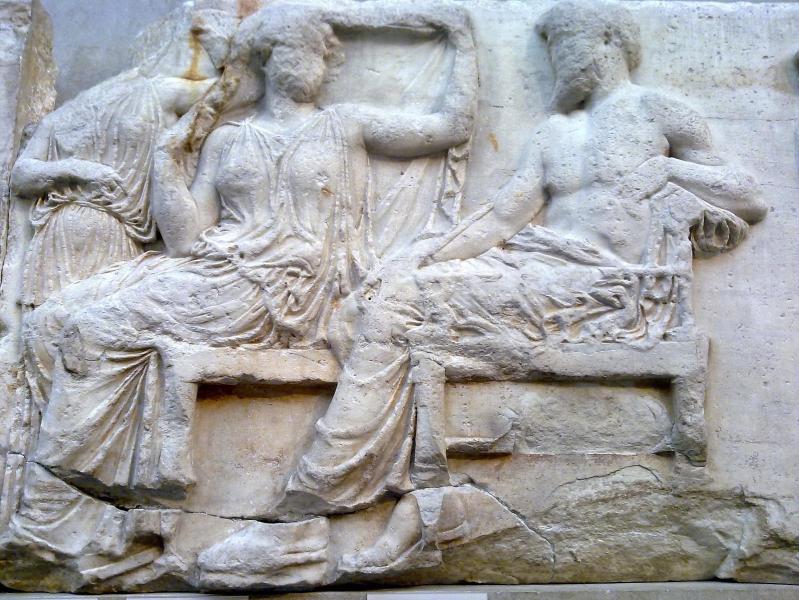- Read offline
- Access all content
- Use the in-app Map to find sites, and add custom locations (your hotel...)
- Build a list of your own favourites
- Search the contents with full-text search functionality
- ... and more!
Brotherly Love
The marriage of Hera and Zeus

Zeus had to use cunning to seduce an uninterested Hera (perhaps because he was her brother), who approached her on the summit of Mount Óchi in southern Évia disguised as a little bird which she took to her breast to warm. He revealed himself as Zeus, and she said only if you marry me first, and they spent a 300-year-long wedding night on Sámos ‘concealed from their dear parents’.
Hera was pre-eminently the goddess of marriage, worshipped in three aspects: the Girl, the Fulfilled and the Separated, but never in an erotic fashion or as a mother (though often a wicked stepmother); she was always the Great Goddess, ambivalent about her relationship with her upstart patriarchal consort, and frequently returned to Sámos to bathe in the Imbrassos river to renew her virginity.
Her sanctuary was filled with art, but the holy of holies was a plank of wood crudely painted with the goddess’ features, believed to have fallen from heaven, too sacred to be touched; to carry it, the priests tied it with twigs of osier.
Twice a year celebrations took place: the Heraia, in honour of her marriage, and the Tonea, recalling an attempt by the Argives to snatch the sacred plank, only to be thwarted by the goddess, who nailed their ship to the waves until they returned it. By her altar were her symbols: two peacocks and an osier.
Image by bram_souffreau

